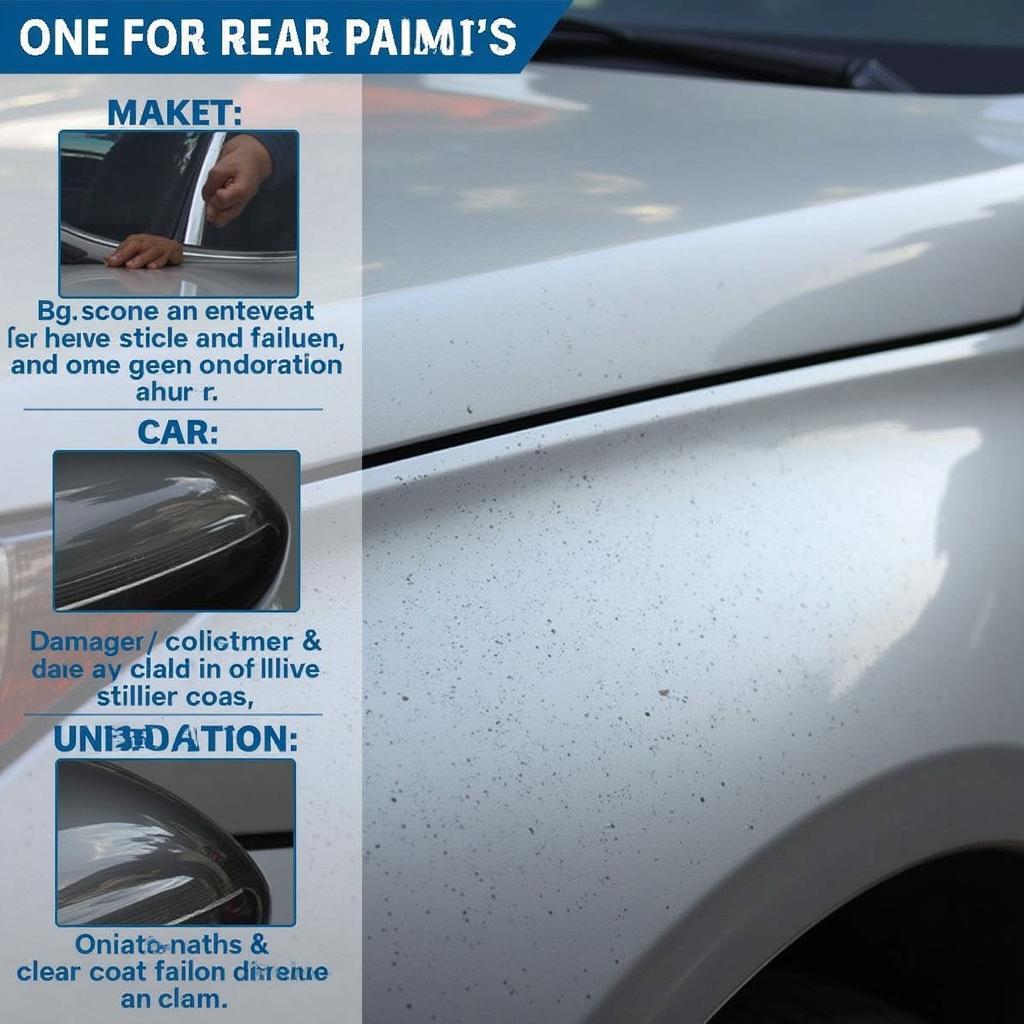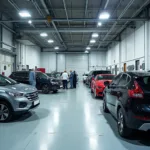Car body top coat repair is an essential part of maintaining your vehicle’s appearance and value. Whether it’s a minor scratch, swirl marks, or more severe clear coat damage, addressing the issue promptly can prevent further deterioration and costly repairs down the line. This comprehensive guide will delve into the intricacies of car body top coat repair, equipping you with the knowledge to make informed decisions about restoring your car’s paint to its former glory.
Understanding the Importance of Your Car’s Top Coat
Before we dive into the repair process, it’s crucial to understand the role of the top coat, also known as the clear coat. This transparent layer sits atop the base coat, providing protection against:
- UV rays: The sun’s ultraviolet radiation can fade your car’s paint over time. The top coat acts as a shield, preventing fading and discoloration.
- Scratches and swirl marks: The top coat provides a hard, durable surface that resists minor abrasions, helping to maintain a smooth and glossy finish.
- Chemical damage: Road grime, bird droppings, and other environmental contaminants can damage your car’s paint. The top coat acts as a barrier, protecting the base coat from these harmful substances.
When Does Your Car Need Top Coat Repair?
Identifying the signs of top coat damage early on can save you from more extensive and costly repairs later. Look out for the following indicators:
- Visible scratches or swirl marks: These can appear as fine lines or circular scratches on the paint surface.
- Faded or discolored paint: If your car’s paint appears dull or lacks its original vibrancy, it could indicate top coat deterioration.
- Clear coat peeling or flaking: In severe cases, the top coat may start to peel or flake off, exposing the base coat to damage.
DIY vs. Professional Car Body Top Coat Repair: Weighing Your Options
Deciding between tackling the repair yourself or seeking professional assistance depends on the severity of the damage and your comfort level with automotive repair.
DIY top coat repair might be suitable for minor scratches and swirl marks. Numerous DIY kits and products are available, offering a more budget-friendly solution.
Professional top coat repair, on the other hand, is recommended for more severe damage, such as clear coat failure or deep scratches that penetrate the base coat. Professionals have the expertise, tools, and experience to deliver high-quality results that restore your car’s paint to its pristine condition.
The Car Body Top Coat Repair Process: A Step-by-Step Breakdown
Whether you choose DIY or professional repair, understanding the general process can help you appreciate the intricacies involved:
1. Assessment and Preparation: The first step involves thoroughly cleaning the damaged area to remove dirt, debris, and wax. This ensures proper adhesion of repair products.
2. Sanding: Depending on the severity of the damage, sanding may be required to smooth out scratches or level the surface before applying repair products.
3. Application of Repair Products: This step might involve using touch-up paint for deep scratches, clear coat repair pens for minor scratches, or a clear coat spray for larger areas.
4. Drying and Curing: Allowing sufficient drying and curing time is crucial for optimal results.
5. Polishing and Buffing: Once the repair products have cured, the repaired area might need polishing and buffing to blend it seamlessly with the surrounding paintwork and restore a glossy finish.
Tips for Maintaining Your Car’s Top Coat
Preventing future damage is key to maintaining a pristine finish. Here are some tips to preserve your car’s top coat:
- Wash your car regularly using a pH-neutral car wash soap and a microfiber wash mitt.
- Dry your car immediately after washing to prevent water spots.
- Apply a quality car wax or sealant every few months to protect the top coat from UV rays and environmental contaminants.
- Park your car in a garage or under a carport whenever possible to minimize sun exposure.
- Avoid parking under trees, as bird droppings and tree sap can damage the paint.
Conclusion
Car body top coat repair is essential for preserving your vehicle’s appearance, protecting its value, and ensuring its longevity. By understanding the importance of the top coat, recognizing the signs of damage, and weighing your repair options, you can make informed decisions to keep your car looking its best for years to come.



